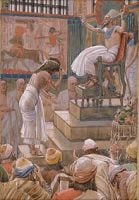
The Standard Model
Introduction What could the Standard Model of particle physics possibly have in common with biblical accounts of the Israelites’ travels in the Sinai Desert, Kabbalistic

Introduction What could the Standard Model of particle physics possibly have in common with biblical accounts of the Israelites’ travels in the Sinai Desert, Kabbalistic

Then drew near the daughters of Zelophehad …. of the families of Manasseh, the son of Joseph; and these are the names of his daughters:

And ye shall take you on the first day the fruit of goodly trees, branches of palm-trees, and boughs of thick trees, and willows of

In the six hundredth year of Noah’s life, in the second month, on the seventeenth day of the month… all the fountains of the great

In physics, we seek Grand Unification, also known as the Theory of Everything. The Standard Model describes three out of the four fundamental forces: the

Now, therefore, write ye this song for you, and teach thou it the children of Israel.” (Deut. 31:19) The four known fundamental forces are: gravitational

This week, we read in the Torah portion Vayigash (Gen. 44:18–47:27) about Joseph revealing himself to his brothers and Jacob coming to Egypt with his family. This
On the penultimate day of the Passover Holidays (which is called Shvii shel Pesach – the Sevenths Day of Passover), we read in the